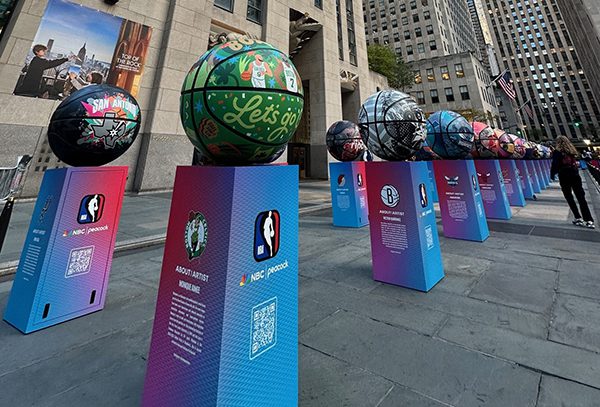Designing a promotion can be difficult. Your primary concern is putting together a program that will help meet your objective — typically to increase sales. To this end, there are many tactics you can use. Some of these tactics are relatively easy to plan and execute — such as dropping coupons via a freestanding insert. Others are not so simple.
Programs with unique fulfillment are harder to execute on the back end, as well as to design on the front end. It is important to consider what you are building — before you build yourself into a corner. There are three stages of a promotion: (1) design, (2) execution and (3) delivery. Delivery is also known as the back end of a promotion — it is invisible to many consumers, and often ignored by marketers.
But, timely and fair delivery on promises is critical to avoid the risk of alienating consumers and retailers whom you want to impress favorably. Each of these stages is interdependent upon the other — your design will impact your delivery and your execution — what is possible vis-à-vis execution and delivery will impact your design.
Donald Silberstein, senior VP, SCA Promotions, Inc., a leading promotion risk management firm headquartered in Dallas, TX, outlined the following 10 factors to consider when designing your next promotion.
- Payment assurance
Will your budget survive if something unexpected happens — for instance, response rates are significantly higher than expected? Either design a program that limits redemptions (for example only the first “10,000” redemption requests will be fulfilled), be prepared to pay for excess redemptions or contract with a risk management company to assume the redemption risk.
- Eligibility requirements
When designing your program, it is important to spell out in the rules those parties who are eligible to participate (and those who are not). The primary purpose of limiting eligibility is to maintain the perception of fairness by the public. It is also important to keep parties who can affect the outcome of a promotion “disinterested.” If eligibility requirements are too stringent, they can be difficult to police on the back end (for instance, is an independent contract for an advertising agency a disallowed party? And how would you know?)
- Confirmed adherence to rules
Rules must be clear, enforceable and easy to comply with. For instance, if a field goal must be kicked from a 50-yard line of a football field, there must be a method in place to ensure the kicker adheres to stated rules. On occasion there might be breakage of these rules (he kicked from the 49-yard line); what will you do in this scenario? (Suggestion; either allow the attempt or slightly reduce the prize). Perceived unfair rules enforcement risks significant negative p.r.
- Integrity of selection process
Not only must the selection of a winner be objective and auditable, it must also be perceived as such. Can you demonstrate to interested parties (consumers, press or regulators) in accordance with the rules? For random selection, it is important to use an auditable process.
- Establish allowable deviations up front
Oftentimes you might field a program, which requires a specific number of UPC codes, or for entries to be received by a certain date. Inevitably you will receive consumer entries that do not exactly follow the criterion you requested. It is critical that you treat all consumers equally. If 10 UPCs are requested, and only nine are received, should you fulfill the consumer’s request? These protocols, and final arbiters, must be decided ahead of time — and applied equally across the entire life of a program.
- Hire judges that inspire trust
If judges are required to confirm your compliance or to decide outcomes, the procedures must be well documented and the judge must not have a stake in the outcome. Especially in circumstances where subjectivity is involved, for instance a recipe contest, the judges chosen to render decisions are critical. These judges must be objective, and more importantly, be perceived as objective. The CEO of a company might have all fairness at heart, but be perceived as having an agenda. Require participants to accept the finality of judges’ decisions as a condition of participation.
- Privacy concerns and leftover data
One of the key benefits of a promotion requiring consumers to provide you with personal information such as their names and addresses is that it can help you develop a database for future marketing programs, or market research. However — you must make certain that consumers opt-in to additional marketing ahead of time. Privacy is a big concern nowadays, driven by many issues resulting from the gathering of information on the Internet. Think up front about these issues so that the data you are left with is a valuable asset — and not just hazardous waste.
- Don’t overbuild the structure
Though the creation of an objective and auditable program is important (who will ever forget the McDonald’s Monopoly promotion…AKA “McScandal”), it must also be do-able. Though it might be nice to have an auditor of your auditor, both cost and reality are considerations. If you build in too many checks and balances it can be quite expensive. Strive for as many self-auditing procedures as possible. Building in security is critical, but do it intelligently.
- Respect intellectual property
If you don’t want to be faced with possible cease and desist edicts, recalls, or lawsuits, make certain you have permission to use other people’s patents, trademarks or other assets. If a company believes they have a patent on executing a specific type of online game, for instance, they could come after you, or force you to change gears mid — stream. Make certain that the companies you are working with have the rights to offer whatever they promise you.
- Is the final result image enhancement?
When all is said and done, it is critical to remember that we are in the marketing business. Our end goal is increased sales, an enhanced retailer relationship and a happy consumer. It just does not make sense to ask the consumer to do too much in order to play a game, or to collect a prize if he or she won the game. Always try to maintain entertainment value and ensure a positive halo after the promotion is over.
According to Silberstein, “These 10 concerns may sound intimidating, but they’re not. You just need to think logically and ask for the right kind of help.” Hire the best experts in the field, and think about these issues — before they become issues. There are companies that specialize in helping you do all the tasks listed above. Give them a call early in your planning process.
Most importantly, these 10 factors, which profoundly affect the back end of our promotions, should be decided long before the promotion is over. When all is said and done, if you don’t watch your back-end, who will?
Sara Owens is president of Promo-Pros, Inc. in St. Louis. Reach her at sara@promo-pros.com.



